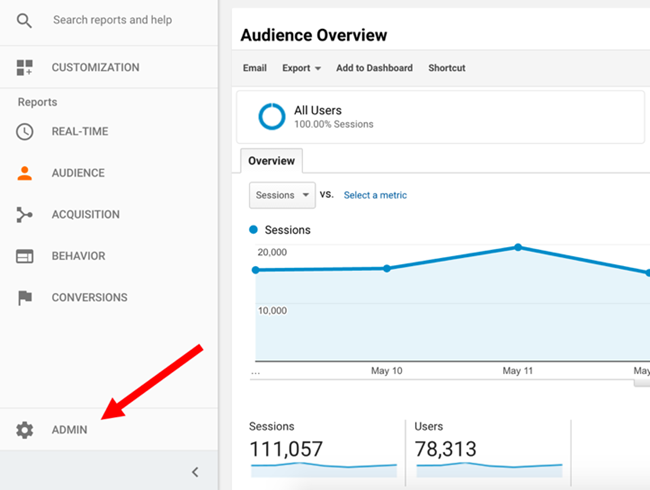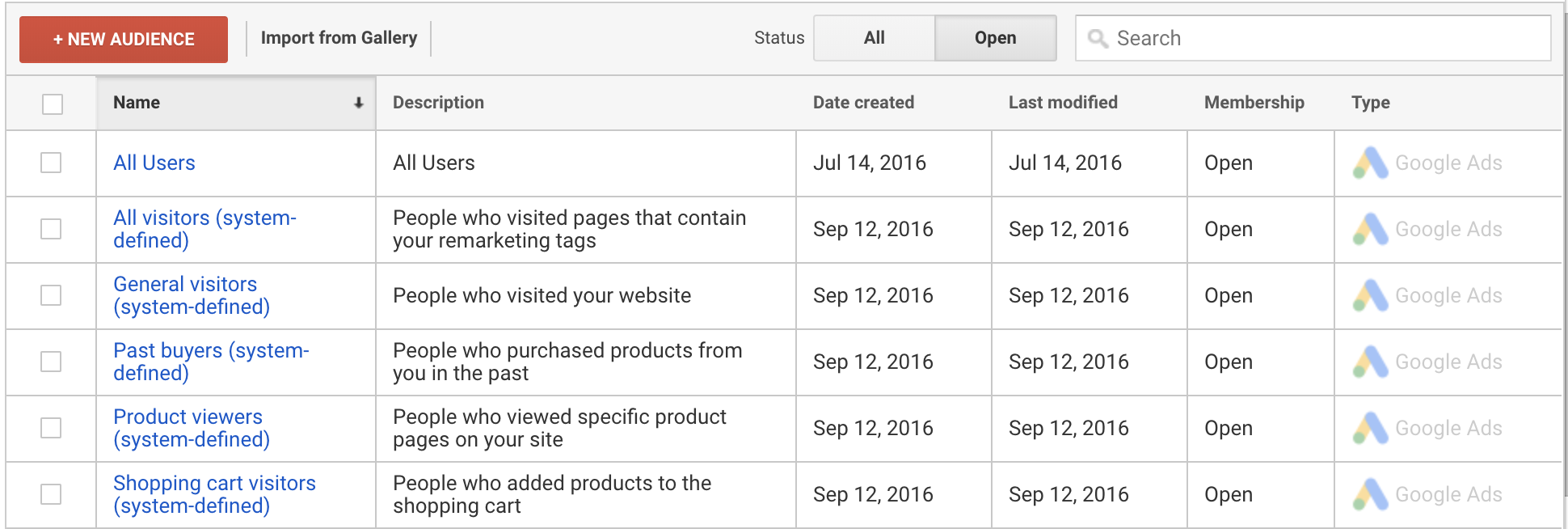Maximizing Your Projects with Remarketing In Google Analytics
Maximizing Your Projects with Remarketing In Google Analytics
Blog Article
Effective Methods for Remarketing in Google Analytics
In the realm of electronic advertising and marketing, the world of remarketing in Google Analytics stands as a pivotal tool for services aiming to enhance their on the internet presence and conversion prices. Via strategic target market division, tailored remarketing lists, and engaging ad creatives, organizations can craft personalized campaigns that resonate with their target audience. The real success exists in the ability to continuously refine and maximize these methods based on performance metrics and information understandings. By checking out the nuances of dynamic remarketing and leveraging innovative monitoring devices, companies can unlock the full capacity of their remarketing initiatives, causing boosted brand name exposure and consumer interaction.
Audience Segmentation
Making use of audience segmentation is a crucial technique in optimizing the effectiveness of remarketing projects within Google Analytics. By splitting your target market right into unique teams based upon their behavior, demographics, or rate of interests, you can customize your advertising messages to be extra appealing and pertinent. This technique permits you to deliver customized ads to specific segments, increasing the possibility of conversion.

Additionally, audience division helps you understand the differing demands and choices of various customer teams, permitting you to craft even more compelling advertisement creatives and deals. This targeted approach not only boosts the effectiveness of your remarketing initiatives but also enhances general campaign performance.
Setting Up Remarketing Lists
To properly apply remarketing methods in Google Analytics, the initial step includes producing targeted remarketing listings based upon certain audience interactions. Establishing up remarketing checklists allows marketing experts to section their website site visitors right into various categories based upon their actions, such as web pages checked out, items looked for, or activities tackled the site. By specifying these segments, marketing experts can then develop pertinent and customized advertisements that target these particular groups, enhancing the chance of conversion.
Remarketing checklists can be established up utilizing different standards such as page check outs, period of visit, specific objective conclusions, and even specific events set off on the site. This degree of personalization enables marketing professionals to customize their promotions to match the interests and preferences of each fractional target market, resulting in greater interaction and conversion prices.
Additionally, remarketing listings can likewise be produced based upon data imported from various other resources like CRM systems, permitting for much more exact targeting. By establishing these targeted remarketing listings, online marketers can efficiently connect to potential clients that have actually currently revealed interest in their services or products, making the most of the effect of their remarketing projects.
Developing Engaging Advertisement Creatives
After segmenting website visitors right into targeted remarketing checklists based upon details audience communications, the following vital action is to craft engaging ad creatives that resonate with each segmented group's preferences and rate of interests. The efficiency of remarketing projects greatly relies on the capacity of these ad creatives to catch the interest of the audience and drive them to take the desired action.
To develop compelling ad creatives, it is necessary to recognize the one-of-a-kind attributes of each fractional team (What Is “Remarketing” In Google Analytics?). Customizing the messaging, visuals, and supplies to line up with the passions and choices of the target market can significantly increase the possibilities of conversion. Utilizing dynamic advertisements that automatically readjust web content based on the individual's habits can likewise boost the customization of the advertisement experience

Monitoring Efficiency and Optimization
Efficient tracking of campaign performance and constant optimization are essential facets of successful remarketing strategies in Google Analytics. To ensure the effectiveness of remarketing campaigns, marketing experts need to frequently track essential performance metrics such as click-through prices, conversion prices, and return on ad spend. By checking these metrics, marketing experts can obtain useful insights into the performance of their campaigns and identify locations for enhancement.
In Google Analytics, marketing professionals can leverage tools like conversion monitoring and audience segmentation to analyze the performance of their remarketing campaigns. Conversion monitoring allows marketers to track details activities that individuals take after clicking on a remarketing advertisement, supplying valuable information on the performance of the project in driving preferred results. Audience segmentation, on the various other hand, allows online marketers to separate their audience into various sectors based on various requirements such as demographics, behavior, and passions, permitting for more targeted and individualized remarketing efforts.
Constant optimization is vital for taking full advantage of the impact of remarketing campaigns. Marketers ought to use A/B screening to experiment with various ad creatives, messaging, and targeting strategies to recognize the most reliable strategies. By on a regular basis evaluating campaign performance data and making data-driven optimizations, marketers can ensure that their remarketing projects are achieving the preferred results and driving conversions properly.
Leveraging Dynamic Remarketing
Making use of dynamic remarketing can considerably boost the relevance and influence of targeted advertisements in Google Analytics. This sophisticated strategy allows Your Domain Name marketers to reveal see page individualized ads to users who have actually previously visited their internet site or used their mobile application. By dynamically presenting services or products that the individuals have revealed rate of interest in, dynamic remarketing aids to maintain the brand name fresh in their minds and encourages them to go back to complete a purchase.

Moreover, vibrant remarketing projects can be automated and optimized in real-time based on performance information, ensuring that the ads remain efficient and relevant. By leveraging dynamic remarketing in Google Analytics, advertisers can create more impactful and targeted marketing campaign that reverberate with their target market and drive outcomes.
Conclusion
To conclude, effective remarketing strategies in Google Analytics include target market division, targeted remarketing lists, engaging advertisement creatives, performance tracking, and vibrant remarketing. By focusing on tailored advertisements, information evaluation, and continual optimization, organizations can raise conversion rates and drive involvement successfully. Leveraging devices like conversion tracking makes sure that advertisements continue to be customized and relevant, causing general success in remarketing efforts.
Via strategic target market segmentation, customized remarketing checklists, and interesting ad creatives, services can craft individualized campaigns that resonate with their target audience. Utilizing vibrant advertisements that instantly readjust material based on the individual's habits can likewise enhance the personalization of the advertisement experience.
Conversion tracking permits marketers to track specific activities that individuals take after clicking on a remarketing ad, offering beneficial data on the effectiveness of the project in driving preferred outcomes.Making use of dynamic remarketing can dramatically improve the significance and influence of targeted ads in Google Analytics - What Is “Remarketing” In Google Analytics?.In conclusion, reliable remarketing approaches in Google Analytics involve target market segmentation, targeted remarketing listings, compelling advertisement creatives, efficiency surveillance, and vibrant remarketing
Report this page